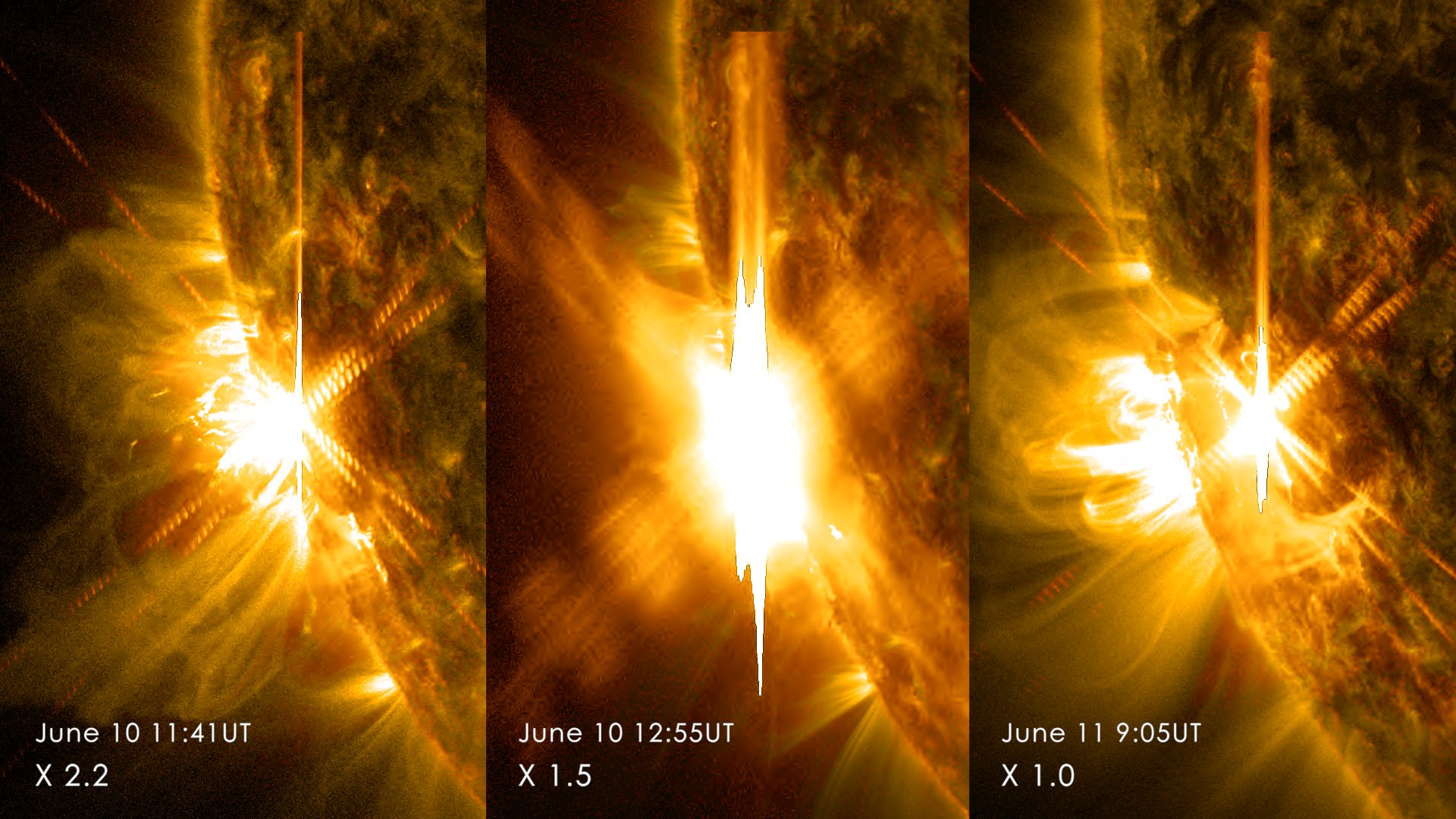Remember yesterday when we mentioned two X-class flares erupting from the Sun within the space of about an hour? We probably should have waited a bit and gone for the trifecta: this morning the same active region flared yet again, making it three high-powered flares within a single 24-hour period.
(And to think this active region has only just come around the corner!)
On June 10, 2014, AR2087 announced its arrival around the southwestern limb of the Sun with an X2.2 flare at 11:41 UT (7:41 a.m. EDT). Then, just over an hour later, another eruption: an X1.5 flare at 12:55 UT. This got pretty much everyone’s attention… here comes 2087!
Perhaps figuring third time’s a charm, the active region blazed with a third flare this morning at 9:05 UT (5:05 a.m. EDT). “Only” an X1-class, it was the weakest of the three but AR2087 still has plenty of time for more as it makes its way around the Sun’s face — all the while aiming more and more our way, too.
Here’s a video of SDO observations showing the two June 10 flares:
X-class flares are the strongest in the letter-classification of solar flares, which send blasts of electromagnetic energy out into the Solar System. While these most recent three are low on the X-scale, they may result in increased auroral activity — especially since it appears that the first two were followed by a pair of CMEs that “cannibalized” each other on their way out. The resulting merged cloud of charged particles is expected to nick Earth’s magnetic field on Friday, June 13. (Source: Spaceweather.com)
No CME has been observed from the June 11 flare, but again: AR2087 hasn’t left the stage yet. Stay tuned!
Source: NASA. Learn more about how solar flares impact us on Earth here.


Am I correct that the moving charges creates these plasma strands that somehow isolates itself from the other plasma strands. And when one of the plasma strands snaps like a rubber band then the lose ends reconnects to a nearby strand? And that is when this flare comes, the snapping of such a strand?
Snapping releases the entrapped charges and they can freely move anyway.
Also these 3 flares, is that from the exact same region?